Synchrotrons
Tuesday, 8th May 2007 by James Turnbull
Synchrotrons are just a fancy type of particle accelerator.
I'm not the world's greatest physicist but, as far as I understand it, they are circular accelerators that use an electricity field to speed up sub atomic particles to something near the speed of light and a synchronous magnetic field to rotate the beam (hence the name).
The resulting synchrotron radiation is a million times brighter than normal sunlight and a billion times stronger than your everyday X-ray - making it great for looking inside stuff.
One of the first dedicated synchrotrons was built underground in Daresbury, UK, but will close next year.
However, until then you can get a live status display of the beam. I don't understand it either but it looks cool to leave it on the screen at work.
Lightsources lists 69 different synchrotrons around the globe, so we're only going to look at a few of the most attractive.
And finally, Diamond is the UK's new synchrotron near Didcot, Oxfordshire.
Although on Google Earth construction has just started, the Diamond "light source" (radiation sounded too dangerous) was first used earlier this year.
Coincidently, we last looked at particle accelerators around this time last year. I hereby name this particle accelerator week!
Google Earth Community member ChrisJHall also put together an excellent collection of Synchrotrons.
More info: Back to basics, Synchrotron (device), Synchrotron radiation & Diamond Light Source.
Many thanks to ChrisJHall
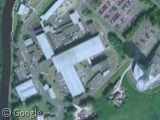
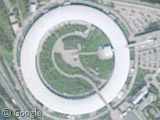
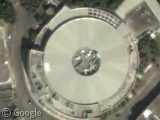
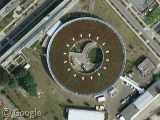
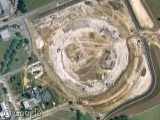
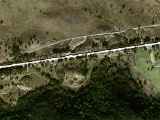
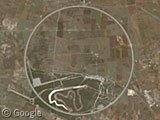
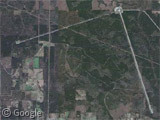

A little bird told me the Diamond synchrotron in UK, which was widely announced to be running on time and on budget actually has never worked. So why did all the money go on delivery bonuses for senior execs ? (… that was largely British tax-payer’s money ! ) Tony Blair announced that Diamond was working just fine… more spin from the arch-manipulator of the truth ! When will any serious science come from the Diamond synchrotron. Don’t hold your breath !!!
Bitter, James?
These accelerators are certainly very interesting forays into science. But when I see the level of effort and money being sunk into projects like CERN (or apparently the wrath-provoking Diamond synchrotron), I wonder about the practical value to mankind of simulating big bangs and “looking inside stuff”.
The value is in getting to know the workings of the universe in which we live in.
We have a brand – spanking new synchrotron here in Melbourne, Australia View Placemark (-37.914071,145.142419) – source of much political backslapping.
another one here in melbourne australia:
View Placemark
http://www.synchrotron.vic.gov.au
Not only will my beautiful Australian Synchrotron be supremely useful and versatile, it has its very own pond with ducks. Visit our website for a vast array of synchrotron facts, pictures and even timelapses of construction. We will be opening very soon.
it’d help if i actually included the url
http://www.synchrotron.com.au
Synchrotrons use a beam of electrons in a circular vacuum pipe to generate light ranging from ultraviolet into the x-ray region. The electrons are guided around the ring by magnets. These are incredibly sophisticated systems that require hundreds of physicists and engineers to operate. Newly built synchrotrons take many months to commission before useful research can be done.
One of the primary fields of research nowadays is figuring out the structure of complex proteins. Last fall Roger Kornberg won the Nobel Prize in Chemistry for doing exactly that with Stanford’s synchrotron.
These machines are used every day by literally thousands of scientists from every discipline all over the world. It’s unfortunate the level of misunderstanding that seems to surround them – I guarantee that where ever you are right now, you cannot glance in any direction and not have your gaze fall on something that was improved (or invented) because of synchrotron research.
For a lot more detail about how synchrotrons work and what they’re used for, check out http://www.lightsources.org
How bout the one in Saskatoon.
I would just like to respond to James Makepeace’s comment about DIAMOND not working. In fact I was one of the first users on the machine during the first batch of beam time and it was working just fine. We ran a successful experiment, which I am now writing up as a paper. I can’t imagine where his “little bird” came from. As for the usefulness of synchrotrons like DIAMOND it is hard to overestimate their contributions to science and to technological applications. It is important to realise that DIAMOND and other light sources around the world serve a very wide scientific community that spans engineering, physics, biology, chemistry, materials science not to mention archaeology. It is completely different to machines like those at CERN, which are basically looking for new particles but I would vigorously defend those too – what are we if we if we lose our curiosity and sit around whingeing about things.
I would suggest that James Makepeace stays away from talking birds.